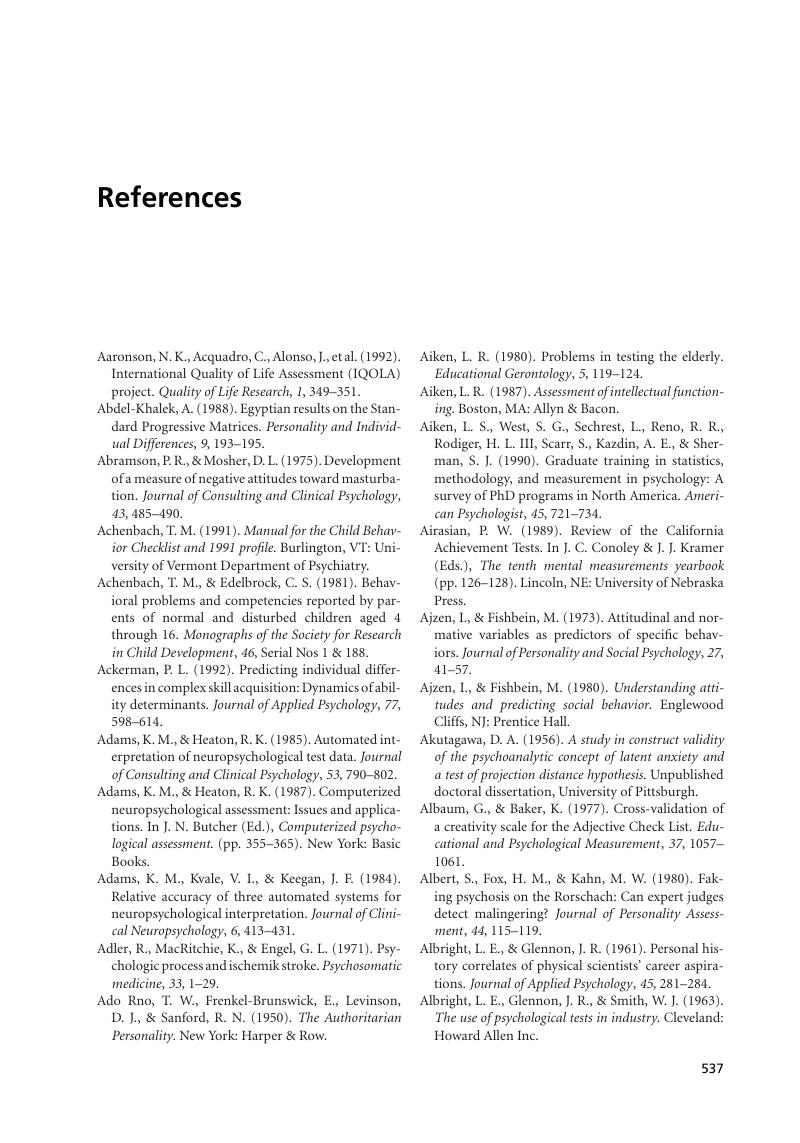Book contents
- Frontmatter
- Contents
- Preface
- Acknowledgments
- PART ONE BASIC ISSUES
- PART TWO DIMENSIONS OF TESTING
- PART THREE APPLICATIONS OF TESTING
- PART FOUR THE SETTINGS
- PART FIVE CHALLENGES TO TESTING
- Appendix: Table to Translate Difficulty Level of a Test Item into a z Score
- References
- Test Index
- Index of Acronyms
- Subject Index
- References
References
Published online by Cambridge University Press: 05 June 2012
- Frontmatter
- Contents
- Preface
- Acknowledgments
- PART ONE BASIC ISSUES
- PART TWO DIMENSIONS OF TESTING
- PART THREE APPLICATIONS OF TESTING
- PART FOUR THE SETTINGS
- PART FIVE CHALLENGES TO TESTING
- Appendix: Table to Translate Difficulty Level of a Test Item into a z Score
- References
- Test Index
- Index of Acronyms
- Subject Index
- References
Summary

- Type
- Chapter
- Information
- Psychological TestingAn Introduction, pp. 537 - 621Publisher: Cambridge University PressPrint publication year: 2006



